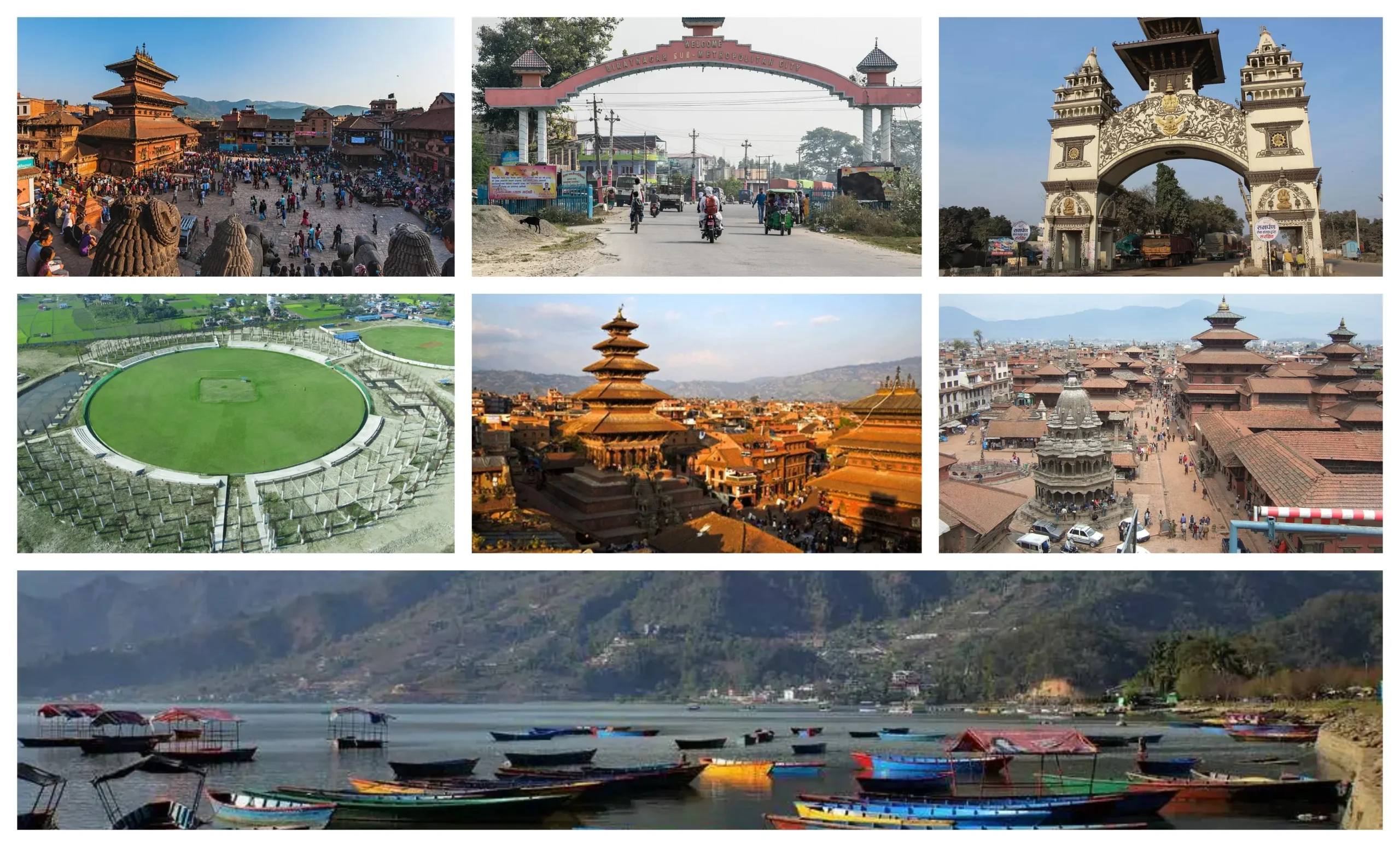Table of Contents
- 7 Metropolitan cities in Nepal/ largest Cities in Nepal – Nepal City
- Kathmandu – Densest Nepal city( 1.442 million people, 2020 census )
- Lalitpur ( 551,667 Population, 2021 Census )
- Bhaktapur – Nepal City (432,132 Population Census 2021 )
- Birgunj – least populated Nepal city (272,382 Population, Census 2021 )
- Chitwan (369,377 Population, Census 2021 )
- Biratnagar ( 756,000 Population, Census 2022 )
- Pokhara, Nepal City ( 599,504 Population, Census 2021 )
- Conclusion – Top 7 largest Cities in Nepal ( Nepal city)
- FAQs about largest Nepal City
7 Metropolitan cities in Nepal/ largest Cities in Nepal – Nepal City
Nepal currently has six metropolitan cities.
1. Kathmandu, the Densest Nepal city( 1.442 million people, 2020 census )
Kathmandu is one of the oldest and densest cities in the world. It is known as the “heart of Nepal”. Kathmandu is also the capital city of Nepal (Nepal City). In ancient times, Kathmandu was also called Nepal Mandala, and it is home to the Newar community. The city was the Kingdom of Nepal’s royal capital and is home to palaces, residences, and gardens established by the Nepali elite. Since 1985, it has been the headquarters of the South Asian Association for Regional Cooperation (SAARC). It is now the capital of the government of the Federal Democratic Republic of Nepal, which was created in 2008 and is located in Bagmati Province.
Cultural marvels: Kathmandu is mixed with many cultures and religions. We can say that it is the live museum of Nepal. There are 7 sites which are recognized by UNESCO world heritage. The fames Boudhanath stupa and Swayambhunath stupa are center of Buddhist piligrime. And Iconic Hindu temple, Pashupatinath is devotion to Lord Shiva. There are also other heritage sites such as Patan Durbar square, Bhaktapur Durbar square and Hanumandhoka lies in Kathmandu valley
Spiritual Oasis: If you seeking for spiritual enlightenment, I will suggest Kathmandu is the best place to visit. Kathmandu offers you different kinds of places where you can find spiritual relief or enlightenment. The iconic Swayambhunath stupa is the oldest stupa in the world where not only Buddhists also people who follow other religion come to visit this Monkey temple.
In the same way, Boudhanath stupa is another UNESCO site where you can find peace spiritual enlightenment. It is the hub of Tibetan Buddhist piligrime. if you wan to more about Kathmandu visit, you can also visit the the Cultural Wonders of Kathmandu. Hindu all over the world come to visit the Pashupatinath temple also known for Lord Shiva temple . It is one of the UNESCO world heritage site.

Kathmandu temple
Bustling Markets: Kathmandu’s, Nepal City is the hub of Nepal. All over Nepal come to visit Kathmandu find their desired things. Thamel area is the tourist hub for foreigners who come to explore Nepal. Thamel night market is one of the charm which gives tourist good vibes to entertain. It is packed with local shops, ancient handicrafts, mountain trekking gear, restaurants and hotel. Thamel is also famous for local cuisine such as Momos, Dal Bhat( Rice with soup).
2. Lalitpur ( 551,667 Population, 2021 Census )
Lalitpur is known for Patan Durbar Square is a culturally rich city of Nepal situated in Kathmandu Valley. The historic architecture, best hospitality and warm hearted resident makes Lalitpur a best destination in Nepal. Lalitpur is best for those looking for a unique combination of heritage and modern lifestyle. Lalitpur is one of the largest cities in Nepal after Biratnagar.
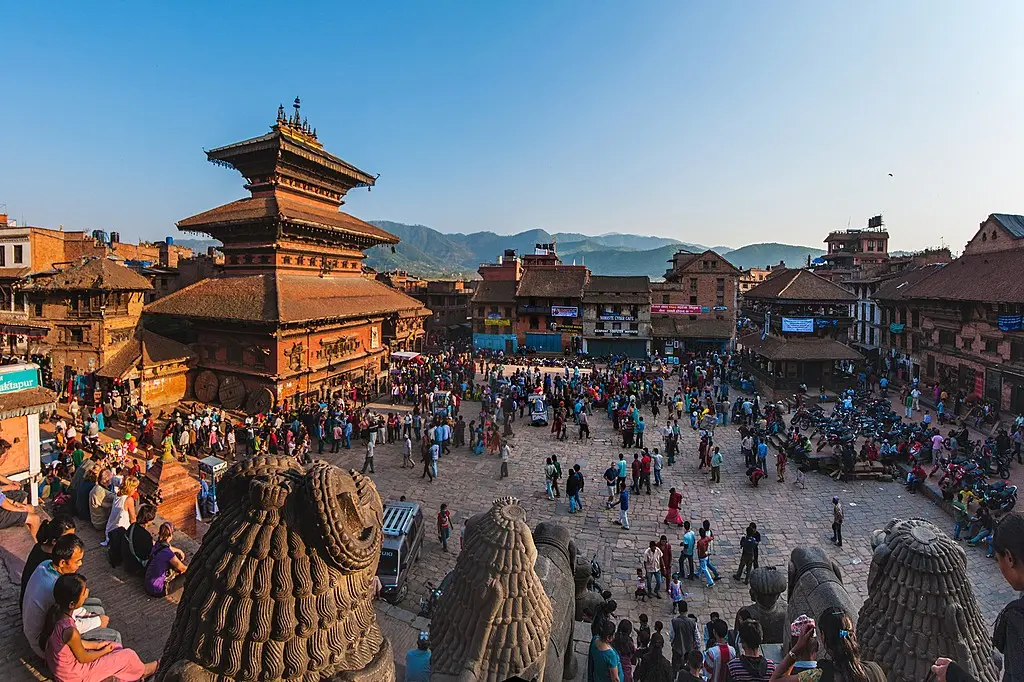
History: Kathmandu Valley had four fortified cities during the Malla era: Kantipur, Lalitpur, Bhaktapur, and Kirtipur. These were the capitals of Nepal’s Malla kingdom. Lalitpur is thought to have been built by the Kirat dynasty in the third century BC and later extended by the Licchavis in the sixth century. During the medieval time, the Mallas added on it. Patan was built by Kirat kings prior to the Licchavi monarchs entered the Kathmandu Valley’s political scene.
Culture: Yela is a popular Newar name in Lalitpur. It is stated that King Yalamber or Yellung Hang named this city after himself, and it has been known as Yala ever since. There are several legends about its name. The most well-known is the mythology of Rato Machhindranath, the god who was transported to the valley from Kamaru Kamachhya.
Art and Architecture: In Nepali, Lalitpur is the second biggest city in the Kathmandu valley; ‘Lalit’ means art and ‘Pur’ means city. This city, according to its name, is particularly rich in Newari arts and sculpture, with many masterpiece embellishments carved in stones, metals, and wood sculptures. Patan Durbar square, Hanuman Dhoka, Krishna temple are monuments listed in UNISCO world heritage site. It is a city known for its festivals and feasts, exquisite old art, and the creation of metal, wood, and stone carved statues.
3. Bhaktapur – Nepal City (432,132 Population Census 2021 )
Bhaktapur, sometimes referred to as Khwopa and historically as Bhatgaon, is a city in Nepal’s Kathmandu Valley, about 13 kilometers from the nation’s capital, Kathmandu. Bhaktapur is Nepal’s smallest and most densely inhabited city. Bhaktapur is one of the Kathmandu Valley’s three main cities and a notable Newar community in Nepal. The city is also famous for its Newar culture, food, and craftsmen. The April 2015 earthquake caused significant damage to Bhaktapur.
Historical Significance: According to Kathmandu Valley tradition, the entire valley, including Bhaktapur, was originally a massive lake. Geological investigations carried out by Swiss geologist Toni Hagen established that the Kathmandu Valley was, in reality, a lake produced when the Indian and Eurasian plates collided, resulting in the formation of the Lower Himalayan Range. Ananda Deva, who ruled Nepal Mandala from 1146 to 1167, has been credited with founding Bhaktapur in legends and chronicles.
Durbar Square: Bhaktapur Durbar Square – भक्तपुर दरबार क्षेत्र is a historic royal palace building in the Nepalese city of Bhaktapur. It was their residence to the Malla the rulers of Nepal from the 14th to the 15th centuries, as well as the kings of the country of Bhaktapur 18th centuries, until the country was captured in 1769 by Gorkha Kingdom. Today, this site is recognized by UNESCO heritage site and is jointly administered by the Archeological Department of Nepal and the Municipality of Bhaktapur.
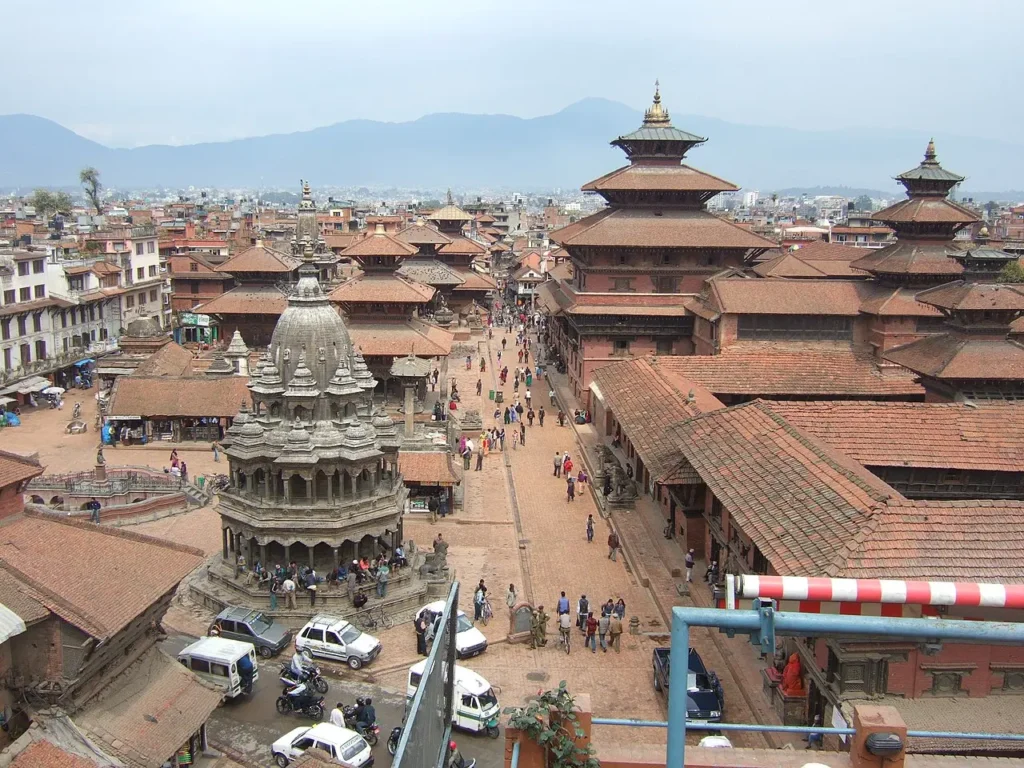
Cuisine: Bhaktapur offers you many delicious cuisine you have not ever tried before. Some are listed below-
- Aalu Tama, the Healthy Stew
- Samay Baji, the Newari Set Meal
- Bara, the Newari Pancake
- Juju Dhau, the King Yogurt
- Choila, the Spiciest Grilled Meat
- Kachilaa or Kachilaa Anda Fry, the Newar’s Unique Specialty
- Sekuwa, the Yummiest Barbecue Meat
Living Heritage: Bhaktapur is also called a living heritage as you can see many ancient temples, monks and monasteries which are listed in world heritage sites. Newari people who are residing here are from 8th centuries. It was also the Newari Kingdom and capital city in 18th century.
4. Birgunj – least populated Nepal city (272,382 Population, Census 2021 )
Birgunj (वीरगञ्ज) is a metropolitan city in the Terai region of southern Nepal. It is located 135 kilometers south of Kathmandu and is connected to Raxaul in the Indian state of Bihar to the north. Birgunj is renowned as the Gateway of Nepal since it serves as an entry point into Nepal from Patna, India. It is also known as Nepal’s Commercial Capital of Nepal. The town is economically significant for Nepal since most trade with India travels through Birgunj and the Indian town of Raxaul. The Tribhuvan Highway connects Birgunj to Kathmandu, Nepal’s capital.
Historical Significance: Birgunj used to be known as Gahawa, but the 11th Rana Prime Minister of Nepal, Bir Shamsher Jung Bahadur Rana, renamed it to Birgunj in 1897. The adjacent villages of Bagahi, Alau, Barewa, Kalaiya, Parsauni, Inaruwa, and Chhapkaiya existed prior to the foundation of Birgunj Bazar. Bir Shamsher Jung Bahadur Rana assigned his loyal pair Siddhvir Mathema and Dhadjavir Mathema (two brothers) as rulers of Mal Ada and Kath Mal Ada in Birgunj to develop Birgunj Bazar in a forested region.

Industries and Trade: The city is home to numerous industries, including manufacturing, agriculture, and trading. It plays a pivotal role in Nepal’s economy by facilitating trade with its neighboring countries, primarily India. Birgunj is particularly famous for its bustling markets, where you can find a wide variety of goods, from textiles to electronics.
Cultural Diversity: Birgunj is a melting pot of cultures and ethnicities. You’ll encounter people from various backgrounds, including Madhesis, Newars, Marwaris, and more. This diversity enriches the city’s cultural tapestry and leads to a vibrant blend of traditions and festivals.
Local Cuisine: Birgunj cuisine is influenced by both Nepali and Indian cultures. The most popular foods are dal, bhat, roti, vegetable curry, and achar (pickle). Tibetan dishes like momo and chowmein are also popular among young people and the elderly.
Tourism: The Bindaswini Temple and its closeness to Arsa Wildlife Reserve and Chitwan National Park make the city attractive. Birgunj has a connection to a temple called Shri Gawaha Mai Temple. Birgunj was once known as Gawaha in honor of the Shri Gawaha Mai Temple.
5. Chitwan (369,377 Population, Census 2021 )
Chitwan District (चितवन) is one of Nepal’s 77 districts, and it occupies the southwestern portion of Bagmati Province. Bharatpur, as the second-big city after Kathmandu, serves as the country’s administrative capital. It has a total area of 2,238.39 km2 (864.25 sq mi) and a population of 369,377 in 2021 census. Bharatpur is the economic and service center of South Central Nepal, as well as a key regional destination for higher education, health services, and transportation. Chitwan is located in Nepal’s the Terai area.
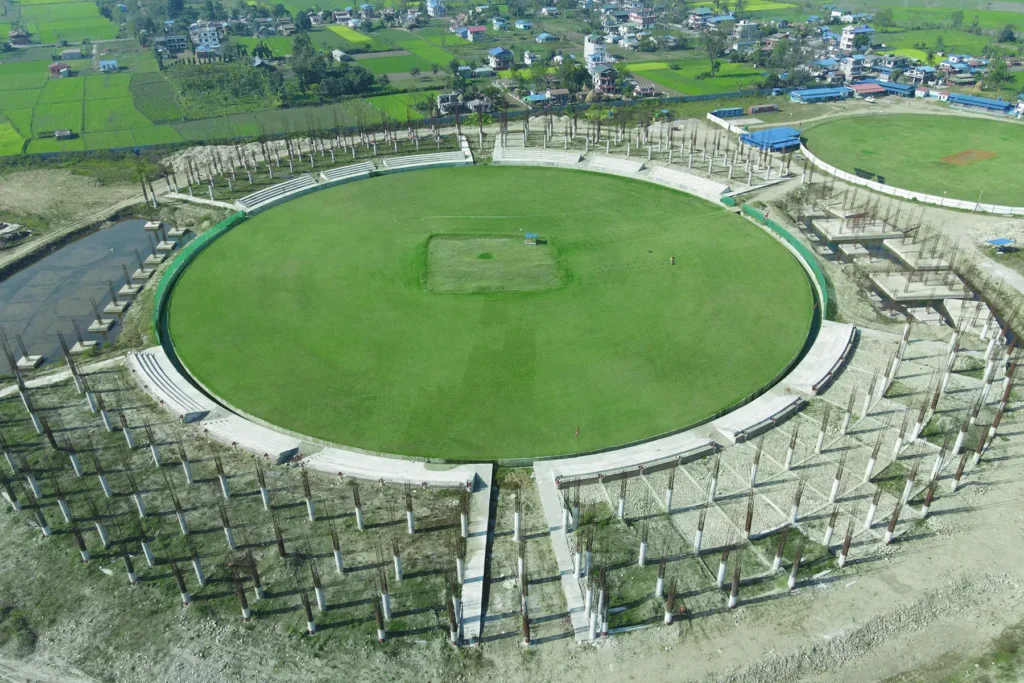
History: The district gets its name from the Chitwan Valley, one of Nepal’s Inner Terai valleys located between the Mahabharat and Siwalik mountains, both of which are considered Himalayan foothills.
Chitwan is one of the few unspoiled remnants of the Terai area, which formerly stretched throughout Nepal’s foothills.
Top 5 Things to do in Chitwan :
- Narayani river boating
- Safari at Chitwan National Park
- Tour at Tharu Cultural Museum and Research Center
- Crocodile Breeding center tour
- Art and gallery visit
- Jungle Tower night Stay In Chitwan National Park
6. Biratnagar ( 756,000 Population, Census 2022 )
Biratnagar is the Metropolitan city of Nepal and the second-largest city (Nepal city) in Nepal which serves as the capital of Province No. 1. Nepal city is connected with India situated in the Morang district, this vibrant city has earned its place as a significant economic, cultural, and educational center in the country. Let’s delve deeper into its fascinating facets.
Historical Significance of Biratnagar
Biratnagar is well-known for its Jute Mills, Nepal’s first large-scale industry, and the famed Kali Mandir, which is revered in Hinduism throughout the country. The city, named after King Virat, serves as a gateway to several Eastern Nepal locations, including Baraha Chhetra and Ilam.
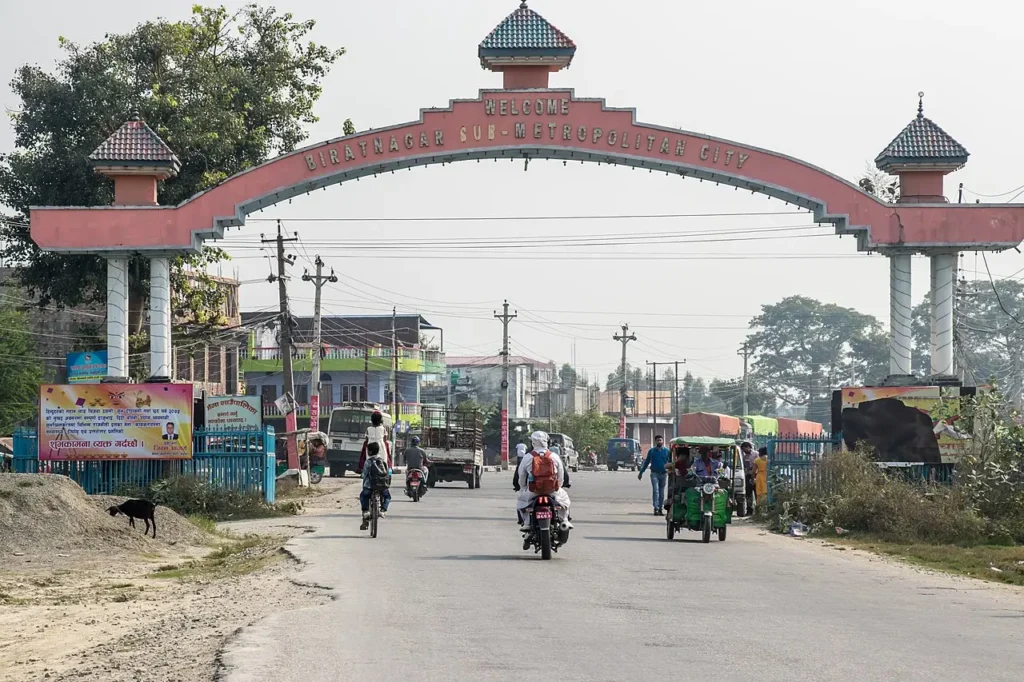
7. Pokhara, Nepal City ( 599,504 Population, Census 2021 )
Pokhara is one of the fourth largest cities in Nepal. Pokhara Metropolitan City is a stunning and vibrant destination nestled in the lap of the Himalayas in Nepal. It’s often referred to as the “Gateway to the Annapurna Circuit” due to its proximity to some of the world’s most famous trekking routes. But there’s much more to Pokhara than just being a base for trekkers. Pokhara valley itself provides several possibilities to enjoy the serenity of serene lakes, temples, caves, waterfalls, and other cultural and natural features.
Natural Beauty: Pokhara is one of Nepal’s most easily accessible destinations. You have the option of traveling to Pokhara by land or by flight. Pokhara offers a variety of activities. You may do everything you choose, from exciting activities to leisure ones. Bungee jumping, paragliding, zip lining, mountain flights, and many more activities are available in Pokhara. Similarly, for relaxation, you may conduct yoga or meditation with a wonderful mountain backdrop, go boating in Fewa or Begnas lakes, or go to Sarangkot for a relaxing view of Sunrise and Sunset over the Annapurna range.

Trekking Hub: I can say Pokhara is the gateway to trekking trails of famous mountains in Nepal. The Annapurna Base Camp trek and the Ghorepani Poon Hill trek are two renouned routes for hikers. Pokhara-Sarankot day trekking is one of the best options for visitors to Nepal. Pokhara Valley is a renowned peaceful and calm tourist destination.

Food and Entertainment: Pokhara offers various kinds of food depending on what tastes you like most. Some of the popular dishes find in Pokhara are –
- Thakali dishes is popular in Pokhara
- Delicious Momo
- Nepali cousine Dal Bhat
- Buckwheat Pancake (फापरको रोटि)
- Smoke-dried meat (सुकुटी)
Conclusion – Top 7 largest Cities in Nepal ( Nepal city)
We discussed about seven largest cities in Nepal or Nepal City. These cities helps to contribute in its economy. It is the hub of commerce, tourism, cultures and commerce. Nepal mostly depends upon the tourism and most of the main source of the income is also the hospitality sector. As Nepal continues to grow and evolve, its metropolitan cities will play an integral role in shaping its future.
FAQs about largest Nepal City
-
What defines a metropolitan city in Nepal?
A metropolitan city in Nepal is defined by population size, commerce, economic activities and administrative structure. At the end, It has to fulfill all requirements such as Hospital, drinking water, roads, telephone, electricity and drainage system.
-
Which place is the administrative capital of Nepal?
The administrative capital of Nepal is Kathmandu city which is also capital of Nepal and largest metropolitan city in the country.
-
How do these cities contribute to Nepal’s GDP?
These cities contribute with various industries, commerce, hospitality and services that are concentrated within their boundaries.
-
Are there any environmental challenges faced by metropolitan cities in Nepal?
Nepal has faced rapid challenges such as pollution, waste management, and strain on natural resources. There are some efforts which are being made to address these issues sustainably.
-
Can tourists explore the cultural heritage of these cities?
Absolutely! Tourist are the main source of income and they can visit historical sites, museums, and cultural events in these cities to experience Nepal’s rich cultural heritage by paying minimum amount.
